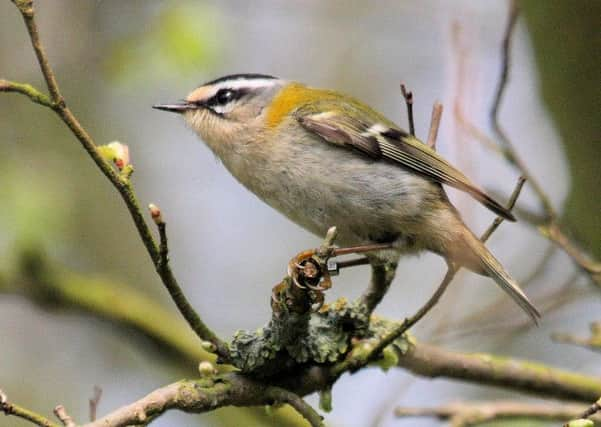Birdwatch: Tiny migrants take coastal breaks on flight paths overseas


Up to seven were in the Spurn area and others at Flamborough including one exhausted individual feeding on insects at the Jubilee watchpoint on the Bempton Cliffs reserve.
Migrating firecrests begin to be seen here from mid-March until May and, understandably for a tiny bird, they favour the shortest possible sea crossings.
Advertisement
Hide AdAdvertisement
Hide AdAs a result the highest numbers are seen in southern England and the bird observatory at Dungeness, Kent. Last Saturday there was a record spring count of at least 101 firecrests there.
It is a beautiful species with its striking facial pattern of black and white stripes topped by a black-edged gold-to-flame-coloured crown stripe.
There have been several firecrests seen inland with a long-staying individual in trees near the Silkstone sewage works, South Yorkshire, another along Warbler Way at the RSPB’s Old Moor reserve and others at Wintersett reservoir, the Fairburn Ings reserve near Castleford and Great Langton, North Yorkshire. These are likely be part of the small but increasing British firecrest population that are also making their way back to breeding sites here.
Firecrests were confirmed to have bred in the New Forest in 1962 and breeding records have steadily increased since then. In 2012 a pair bred in woodland to the west of Sheffield and breeding has been confirmed in North Yorkshire.
Advertisement
Hide AdAdvertisement
Hide AdFirecrests are hard to find during the breeding season and the best way to locate potential breeding pairs is by listening for the male’s song during May.
It is similar to the goldcrest’s but reaches a climax at the end rather than the start, and the contact call is higher-pitched, more piping and shorter.
Large numbers of sand martins, swallows and a few house martins, little ringed plovers and more wheatears arrived back this week. Two garganeys were at Tophill Low and a sandwich tern at Old Moor.
There was also the first influx of singing chiffchaffs back from the Mediterranean and, from further east, a Siberian chiffchaff was at Easington sewage works. A willow warbler was singing at Ingbirchworth reservoir, South Yorkshire on Monday and the first singing blackcaps were due.
Advertisement
Hide AdAdvertisement
Hide AdOspreys were seen from the Barden Scale Raptor Viewpoint in North Duffield Carrs, at Whitley, North Yorkshire, and Potteric Carr and Dunsville in South Yorkshire.
Two Lapland buntings were reported among a flock of golden plovers at Peat Pits, High Bradfield near Sheffield.
A Slavonian grebe was seen from the garganey hide at North Duffield Carrs near Selby this week and two black-necked grebes were still in Scarborough Harbour.
As spring migrants arrive winter visitors are leaving with flocks of redwings and fieldfares, pausing to feed up before making their way to the east coast and then onwards to Scandinavia.